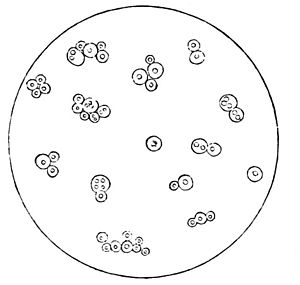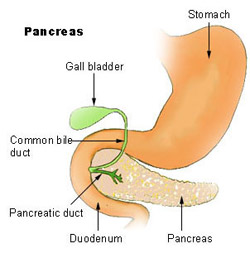Glucose – The Essence of Sweetness (Sweeteners part 2)

Glucose is the major dietary sugar. Its very name is derived from the word for sweetness in Greek (glukus). It is a major source of energy production of most life.
Glucose can be found alone as a simple sugar (or monosaccharide) or combined with itself or other sugars into bigger molecules. When sugars are bonded in pairs they are know as disaccharides. Two glucose molecules together is called maltose. The other main disaccharides are sucrose and lactose. These both contain one glucose molecule attached to another simple sugar (fructose and galactose respectively). Maltose is made during the enzymatic breakdown of starch such as occurs in sprouting. Lactose is the sugar found in milk. Sucrose is common table sugar and is in many natural fruits. These sugars will be discussed in more detail in future articles.
Longer chains of glucose can come in two major types, starch and cellulose, but only starch can be broken down into glucose by our digestive systems (by enzymes in our saliva and small intestine). .Cellulose on the other hand is a dietary fiber meaning humans don’t have the enzymes to break it down into sugars. It remains in our gut as bulk and food for microbes.
Sweetness being a result of the specific interaction of these substances with the taste buds (receptor organs on the tongue) is variable. Sucrose is taken as the standard and is given a sweetness rating of 1. Glucose is almost as sweet with a rating of .0.7. Maltose is not very sweet and has a rating of about 0.4 (less than half as sweet as sucrose). Lactose is less sweet still with a rating of 0.16. Starch and cellulose don’t taste sweet (except that a small amount of starch is broken down to glucose in our mouth by salivary enzymes).
These naturally occurring sugars can all be metabolized to form biological energy. Glucose is the major energy source of many animals including humans. If glucose is so important why should it be a health concern? The simple answer is that sugar is a necessary important nutrient; IF it is consumed in the forms and quantities we are adapted to in balance with the other macronutrients, and with the essential micronutrients needed to properly use it and avoid its harmful effects.
Our evolutionary diet (often referred to as the Paleolithic diet) contained relatively small quantities of mono and disaccharides. Starches were also a smaller part of the human diet and were rarely available in concentrated forms, but combined in wild foods with lots of fiber and other nutrients. They were also generally eaten with significant amounts of animal foods with abundant protein, fat and other nutrients.
Any change from the diet we have adapted to over millions of years is bound to cause a multitude of health consequences. Below I will introduce three major issues that can result from increasing glucose as sugars and starch in our diet.

The first sugar issue I will discuss is dysbiosis and chronic Candidiasis. The second and perhaps most important sugar issue is insulin resistance, metabolic syndrome, diabetes and other associated diseases. Thirdly, I will discuss obesity more specifically.
Dysbiosis and chronic Candidiasis
I mentioned that many animals utilize glucose as a primary energy source. Likewise many bacteria and funguses also are adept at using glucose as a fuel. Our guts, mouths and skin are covered with microorganisms. It is estimated that we are hosts to 10 times as many microbes as human cells in our body. Invasions of undesirable microbes or an imbalance of beneficial or neutral microbes is called dysbiosis. One group of microbes that loves sugar and starch is yeasts. Yeasts are unicellular fungi. The yeasts that inhabit our skin and the mucus membranes of our bowel is called Candida.
When we are healthy these yeasts are kept in balance by certain bacteria, and by our immune system. Antibiotics can kill these beneficial bacteria. The beneficial flora also need proper fiber as a food source and home. Too much sugar and starch can overfeed the yeasts. The results of the decline of protective flora and overfeeding the yeast is overgrowth of the yeast cells. The yeasts expand their territory into tissues where they don’t belong. Worse they can change form and become more invasive, penetrating into the tissues. Still worse they can produce various toxins causing a variety of symptoms. Over time these yeasts can overwhelm the immune system and it no longer is able to keep them in check.
Very long lists of conditions have been attributed to chronic Candidiasis. A few of the more common are listed here: Chronic Fatigue, Syndrome, Irritable Bowel Syndrome, constipation, diarrhea, belching, bloating, sinusitis, chronic headache, muscle and joint pain, and poor concentration.
The science of symbiotic flora is still in its infancy. It is becoming clear that exposure to various microbes and healthy populations of the corrects flora play an important role in the development of the immune system and the mediation of allergies. Tooth decay (dental caries) might also be seen as a form of dysbiosis related to nutrition and sugar. It is caused by an overgrowth of acid forming bacteria, especially Streptococcus mutans on the teeth.
Insulin resistance, metabolic syndrome, diabetes

Genetic predisposition, nutrient deficiencies, central obesity, lack of exercise and excess sugar and starch can cause
these related problems. Essentially, every time we absorb glucose into the blood we trigger an ancient sugar handling mechanism. Special endocrine tissues in our pancreas produce the hormone insulin. Insulin receptors in our tissues signal the tissues to pull the sugar out of our blood and convert it to energy and store the extra as glycogen (a form of starch) in the liver or as fat in our fat cells.
Age combined with the risk factors above cause our insulin receptors become less receptive. When this is severe enough we have diabetes (type 2), too much insulin, little insulin receptivity, too much sugar in the blood. Metabolic syndrome is marked by insulin resistance along with associated increased triglycerides and LDL cholesterol, and high blood pressure. Metabolic syndrome is associated with a much increased risk of cardiovascular disease (heart attack and stroke), diabetes, kidney disease, liver disease, and peripheral artery disease. This is many of the serious degenerative diseases of modern humans.
Obesity
This is both a cause and effect of metabolic syndrome discussed above. I list it separately because obesity is strongly associated with excess sugar and starch intake. We are genetically programmed to crave these substances; especially, if we have ancestors that were subject to periodic famine. Those individuals that ate more hi sugar and starch foods when they were available put on extra pounds that enabled them to survive in times of famine.
In today’s world most of us have continuous access to sweet and starchy foods in unlimited quantity. Worse, these foods tend to stimulate additional craving for more of the same. The results are obvious. In addition to the disease associated with metabolic syndrome obesity is a risk factor for many conditions such as: depression, back pain, carpal tunnel syndrome, osteoarthritis, cancer, sleep apnea, asthma, reflux disease, gall stones, menstrual disorders, and pregnancy complications.
Conclusion
I conclude this article on glucose with some practical ideas and a few of my favorite related nutritional supplements.
Most importantly, avoid excess sugar and starch. Pound for pound sugar is one of the cheapest ingredients added to processed foods, so it is added to many food items in which you wouldn’t expect it. Read all label. Pure glucose is labeled as dextrose and sometimes as grape sugar. Remember that glucose is also ½ of sucrose (table sugar) and similarly a major component of most sweeteners (as will be discussed later in this series). Fruit juice often has added sugars. Even if it has no sugar added, fruit juice is a concentrated food, high in sugars and is best consumed in small amounts and diluted. Dried fruit is also very concentrated. I will discuss the sugar content of various fruits in a future article.
Glycemic index is a useful concept. It is the rate at which the sugars in a food are absorbed into the blood stream. The goal is simply to avoid shocking the system with too much glucose into the blood too fast. I am less concerned with the glycemic index of individual foods than with general eating habits. As discussed above, fibers, fats, and protein all slow down the absorption. Eat slowly and keep in mind that it takes time for your brain to register that you have eaten and that you are full. Eat whole foods when possible. Eat plenty of non-starchy vegetables.
Dr Sears a cardiologist and the originator of the Zone diet suggests the optimal diet consist of approximately 30% of our caloric intake should be carbohydrates (starch and sugar). 40% should be protein, and 30% fat.
Concentrate d sweets like candy and deserts can become an addictive habit. Physically, we become adapted to the stimulation and pick-up and develop cravings. Sugar and starch can also be used as emotional comfort foods. Eliminating the sweets, eating high protein, and nutritional supplements can help with the cravings. But like all addictions we must get the sugars out of reach and out of the house to heal.
d sweets like candy and deserts can become an addictive habit. Physically, we become adapted to the stimulation and pick-up and develop cravings. Sugar and starch can also be used as emotional comfort foods. Eliminating the sweets, eating high protein, and nutritional supplements can help with the cravings. But like all addictions we must get the sugars out of reach and out of the house to heal.
Featured Supplements
These are available in the office or click on the link for further information or to order them at the Dr. Michels Internet Store. If you are not sure what might be of the most benefit call for a consultation.
For Dysbiosis and Candida:
Beta Glucan Synbiotic Formula by BioImmersion Inc. – Powerful combination of Probiotic & fibers for regular bowel habit, weight management: promotes satiety and balances blood sugar. No fillers, flowing agents or excipients of any kind. hardy and viable pedigreed Original strains: 25 billion L. acidophilus, B. longum, L. rhamnosus, L. plantarum, S. thermophilus. organic matrix USDA patented hydrocolloidal beta glucan oat bran , organic whole red beet root and organic inulin from chicory fiber. These fibers also provide a matrix to help establish the probiotics. Available at the office.
G.I. Fortify by Pure Encapsulations – Support the function, microflora balance, integrity, tone, comfort, cellular health and detoxification of the GI tract. Contains: Psyllium, flax, l glutamine, DGL licorice, marshmallow root, aloe vera, slippery elm, and triphala.
Nutri-Flax by Pure Encapsulations – Flax seed fiber in capsules. High quality fiber to promote healthy flora.
A.C. Formula II by Pure Encapsulations– Herbal formula to control Candida and promote healthy flora.
For Glucose Metabolism:
PureWeigh Premeal beverage by Pure Encapsulations– Designed to reduce appetite, cravings, boost energy as a pre meal beverage or meal substitute. Contains, protein (soy and whey), fibers, low glycemic carbohydrates (slo-carb), and vitamins and minerals. French vanilla flavor.
GlucoFunction by Pure Encapsulations – is a combination of key nutrients, antioxidants and herbal extracts designed to promote healthy glucose uptake and metabolism, microcirculation, and pancreatic function to support healthy glucose utilization.
CarbCrave by Pure Encapsulations – Supports healthy neurotransmitter metabolism, affecting the appetite and mood centers of the brain. 5-HTP is a precursor for serotonin, the same neurotransmitter released by the consumption of carbohydrates and associated with enhanced mood. dl-phenylalanine supports dopamine and epinephrine production, responsible for the sensation of well-being. Vitamin B6 is integral as a cofactor for neurotransmitter synthesis. Rhodiola and ashwagandha are believed to encourage the activities of these neurotransmitters while strengthening the body’s resistance to stress and fatigue, common triggers for undesirable eating behaviors.
Gymnema Sylvestre by Pure Encapsulations – Traditional herb used for improved pancreas function and glucose metabolism. Balances blood sugar, reduces sugar cravings.
Nutrient 950 by Pure Encapsulations– is a complete hypo-allergenic, high-nutrient, bioavailable multi-vitamin, multi-mineral and trace element supplement. It offers an advanced mineral delivery system, and the highly desirable coenzyme forms of B vitamins to promote optimal absorption of the nutrients. In addition, it provides a high profile of free radical scavenging antioxidants. This is a gentle, hypo-allergenic formula which is well tolerated by sensitive individuals. Available with and without iron.
One Comment
Comments are closed.

Pingback: Fructose, the Evil Health Food (Sweeteners part 3) | Dr. Jordan Michels DC - Network Chiropractic